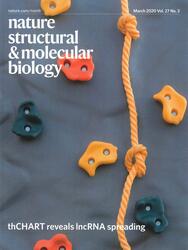Scientists at the Yale Chemical Biology Institute have developed a new strategy for purifying ribonucleic acid ( RNA) complexes – assemblies of RNA with other molecules that regulate gene expression. By combining nucleotide chemistry and DNA nanotechnology, their methods dramatically improved both the sensitivity and specificity of signal, allowed the scholars to detect dramatic changes in chromatin localization of dosage compensation complex caused by stress conditions.
RNA) complexes – assemblies of RNA with other molecules that regulate gene expression. By combining nucleotide chemistry and DNA nanotechnology, their methods dramatically improved both the sensitivity and specificity of signal, allowed the scholars to detect dramatic changes in chromatin localization of dosage compensation complex caused by stress conditions.
Published this spring in Nature Structural Molecular Biology, and featured on the journal’s front cover, the study was conducted by Martin Machyna, postdoctoral fellow, and Lea Kiefer, graduate student, both in the lab of senior author Matthew Simon, Associate Professor of Molecular Biophysics and Biochemistry. Part of the Yale Chemical Biology Institute, the group’s research focuses on developing new chemical and biochemical means of investigating the regulatory roles of non-coding transcription including long non-coding RNAs (lncRNAs) and their influence on chromatin biology. The function of chromatin is to efficiently package DNA into a small volume and to control which parts of the DNA are used by the cell.
Contact: jon.atherton@yale.edu